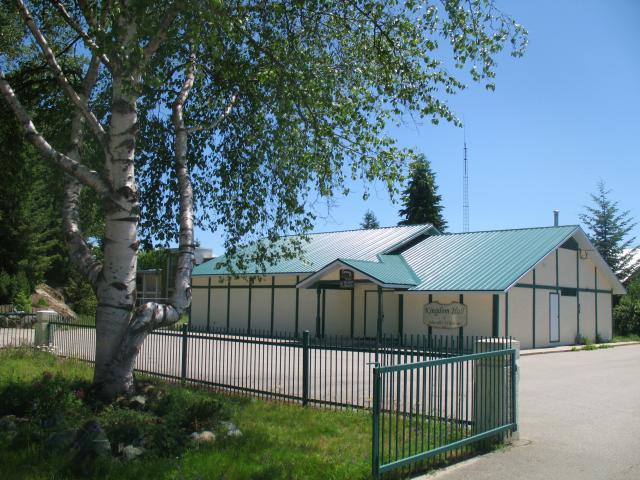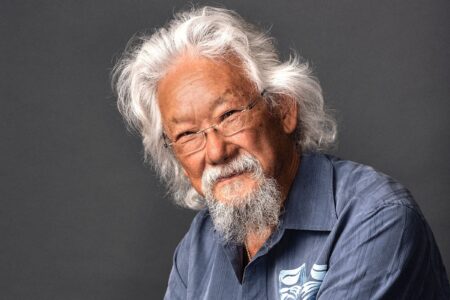Dance Hall Proposal Dropped
An anticipated large crowd at this week’s regular city council meeting in support of the scheduled OCP and zoning amendment for the proposed dance studio in the Jehovah’s Witness hall never materialized. Those who showed up to support the project learned on arrival that the zoning and OCP amendment application had been dropped prior to the council meeting.
The issue in question which saw Renee Salsiccioli applying to rezone the current Jehovah’s’ Witness property on Third Avenue from P-1 (Public/Institutional) to C-2 (Commercial service) would have allowed her to complete an offer to purchase the property. Over the past week the project has garnered much attention. Many letters to both city hall and the press have been received, both supportive of and against the matter which appears to have captivated the hearts of many Rosslanders.
The crux of the issue stems from a request from the city that in exchange for up-zoning the property the potential new property owner offer the city two right of ways on the property both along the southern and eastern boundaries. While law dictates that a city may not sell zoning or demand amenities in exchange for up-zoning it is a regular and precedented occurrence that property owners be asked to offer amenities as part of re-zoning applications.
Part of what caused the often emotional letters to the city and press on the issue was the city planning departments report on the matter (See Salsiccioli’s letter to the Telegraph printed last week here). As presented to council and available for review on the city’s website under item 5a of the July 13th minutes the report from the city’s planning department recommended that the city deny the re-zoning application.
The city had hoped that the applicant would offer them a right of way on the southern perimeter which is a strip of land 67 feet by 8 feet wide, and were looking for the applicant to offer a strip of land on the east side roughly measuring 10 to 12 feet wide running north/south for 100 feet. The applicant agreed to the southern right of way but not the eastern one.
“We’re looking for a sidewalk,” explained city planned Mike Maturo.”That’s basically what we’re talking about. We’re looking for a statutory right of way on the property for pedestrians on two sides; the eastern edge and the southern edge. That is because if you up-zone you negotiate for some type of agreement on whether or not an amenity would be offered by the applicant and if the applicant is not willing to offer the amenity based on negotiations then we have to come forward with a recommendation against it and it is then council’s authority to give her the up-zone or not.”
In asking to be offered the right of way the city’s goal was to increase pedestrian flow through town as the OCP mandates. The up-zoning request in question challenges the OCP on a number of points outlined in Mr. Maturo’s report. The city planning department does not have the discretion or authority to disregard elements of the OCP so when they are confronted with applications that challenge the OCP they attempt to secure amenities to offset and meet the OCP policy objectives which are challenged.
“If the applicant doesn’t wish to offer the amenity and staff feel that it is too much of a challenge to the OCP then we recommend against it and take it to council and then it is council’s decision and authority to determine whether or not it passes or comes back for further review or rejection,” added Maturo. “I can’t do it as an administrative person. I can’t wiggle around the OCP.”
Ensuring pedestrian links and access to and from the high school area is of particular concern to the planning department as RSS is currently far and away the largest commuter hub in the city with over 400 students and teachers travelling to and from the location for the majority of the year. The vast majority of these commuters also travel on foot as pedestrians.
“We’ve got a high school which is the largest commuter generator in town and good planning would suggest that the neighbourhoods immediately adjacent to the generation point should be porous,” explained Maturo. “When you have an up-zone request in a situation like this you seek to establish or re-acquire pedestrian links. In the era when we sold that property (1977) nobody really cared about pedestrians. We care about that now and the OCP tells us to care about it.”
It is important to note also that the city and the planning department support the establishment of a dance studio in the former Jehovah’s Witness hall and as paraphrased from Mr. Maturo’s report, believe the location to be ideal for such a studio to operate on due to its proximity to both RSS and McLean Elementary.
“We really wanted to see it happen,” noted Maturo. “The trail and the dance studio are both compatible uses for the property. They are not mutually exclusive. We wanted to stitch this up at this stage because it’s a good thing for the city. It’s not a bad or onerous requirement. We don’t think it will negatively affect her business by having a 67 foot stretch of sidewalk on the southern boundary and a 100 foot stretch of sidewalk on the eastern boundary. I don’t think that will kill her business. Most of her clients don’t have a drivers licence so it could very well be good for the business.”
Salsiccioli has argued that “This statutory right of way would prohibit any expansion should the school increase in enrollment,” as one of a number of reasons she opposes offering the right of way to the city adding “The city is requesting that I give up 16 feet of land for a wide and moderate angled path which curves around the rock bluff to Third Avenue prohibiting parking in that area and prohibiting additions to the building in that area.”
As pointed out by Maturo an important point to note is that if the property were to receive the C-2 zoning that zone includes a three meter or approximately ten foot set backs from side parcels. While the right of way would disallow development on a portion of her property ten feet of the sixteen foot right of way would have remained unbuildable regardless of the right of way being offered or not.
Undoubtedly concerns about Rossland’s current economic state and the number of empty lots and empty store fronts around town have increased emotional ties to wanting to see this project go ahead. There are few in town that would question the positive benefits the dance studio would bring to town as well as the benefits of having a vibrant functioning building rather than an empty hall. The dance studio would also bring additional tax dollars to the city’s coffers as the Jehovah’s Witness hall currently contributes zero dollars in tax to the city. Rossland’s strong cultural scene would also benefit greatly from the dance studio and fears of losing the studio in town over zoning issues raise concerns about the viability and vibrancy of our town and its ability to both serve and attract new residents.
Salsiccioli also argues that she “Cannot agree to being penalized for the simple reason that I asked for rezoning for a building. As city staff have strongly suggested that when someone wants something from the city the city has to get something in return.” The city’s request that she offer the amenities to town however is a precedent set many times over around town.
“There is a personality element that is being played here and I think it is unfortunate that some of the people who have gotten involved in the discussion haven’t considered that all of our other applicants that request up-zones offer us amenities,” explained Maturo. “There is precedent out there on this. For example when council did an up-zone for a property down on Trail Creek in the Chinese gardens, one of the conditions was that he would put a trail up along Trail Creek. He doesn’t have zoning yet until that trail is built.”
Another closely related precedent is the recent agreement reached this spring after five months of negotiations with Ross Hopkins on Planer Crescent. In order to facilitate the development of a trail connecting the Centennial trailhead with the downtown core the city negotiated throughout the winter in order to reach an agreement with Mr. Hopkins in which he dedicated a piece of land to the city critical to the trail connection in exchange for a rezoning of his property to a small lot designation that would potentially allow four lots to be sold rather than two.
“We said to him this is important to the city to get this trail link and he agreed through negotiations and he gave us the land in the end,” said Maturo. “We went through all of the options with him in trying to secure that link. The thing with this particular applicant is we said to her there are a million ways we can work with you on this would you be interested? And she said no.”
One concession the city was willing to make in the negotiations on offering the right of way was taking on the construction costs and screening costs of the project to help facilitate the process which by law would typically be the responsibility of the property owners.
“In our negotiations we offered and this is out of character for the city but we offered to have the city take on the construction costs and do some of the work which for us is quite a stretch. So in a way we’ve budged a little bit and I think that’s important. We don’t really want to be paying for an additional construction site if we don’t need to but we’ve tried to be reasonable on this one,” said Maturo.
Having a trail run past her potential facility created a safety concern as well as snow removal concerns for Mrs. Salsiccioli who wrote “Presently RSS students have congregated on and around the existing pathway as their new “Smoke pit” since RSS has become smoke free. With a new walkway it is highly likely that it would become the new smoking area /hangout. This would be of great concern for myself and the parents of the students attending this school. I would suggest that it would also cause some anxiety for the senior population living nearby.”
To that point the city has offered to take on additional responsibilities outside of their typical role in helping to address the concern.
“We said we’d screen it and we’d maintain it,” said Maturo. “If you don’t want people spilling into your parking lot fine we’ll screen it we’ll figure out the fences and snow removal but she was not agreeable to that so all of that is basically why we recommended against it.”
While the issue appears to be at a standstill for the moment, Salsiccioli is currently re-assessing her options and deciding what to do next to help her reach her ultimate goal of opening and operating an expanded dance studio in Rossland.


























